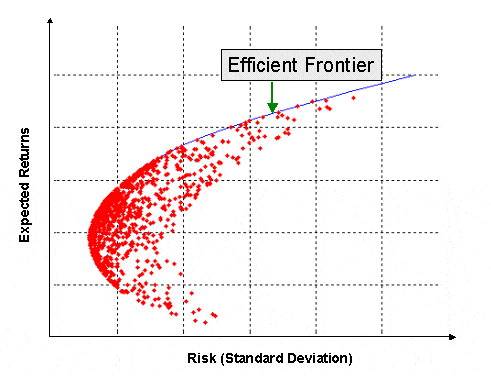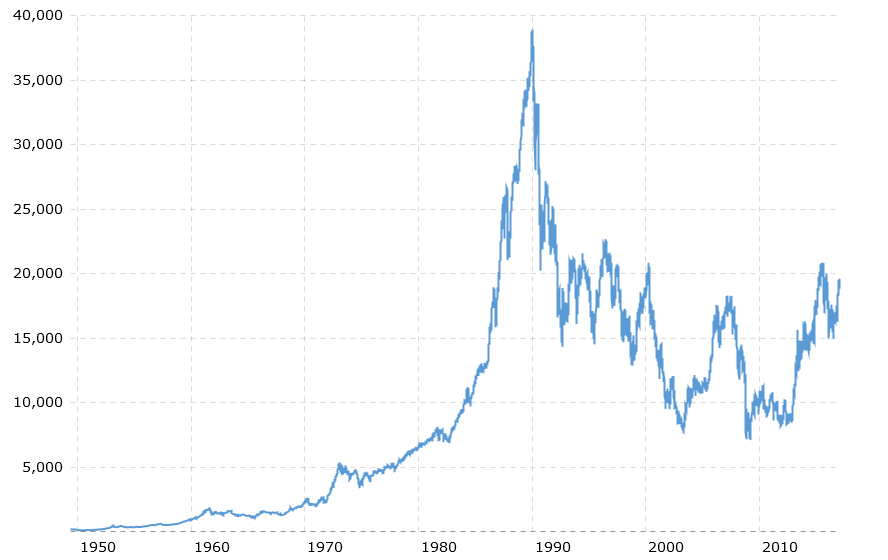I received a question from a long-time reader, noting the multi-year underperformance of non-US stocks relative to US stocks.
Over a 10-year interval, he noted, international stocks very rarely outperformed US stocks, and concluded that it “makes me wonder why any asset manager would invest more than a token amount in international stocks, funds, or ETFs.”
I wildly disagree with his conclusion, but it is a great question. What exactly is the point of investing in international stocks, especially those that just seem to do worse than US stocks over a decade?
To begin, can we nerd-out for a moment on portfolio theory? We start with the first principle that we choose assets because they offer a return. But unfortunately, they also carry some risk.

As a second principle, we also assume that we want to maximize returns, while minimizing risk. More returns = good. More risk = bad.
Portfolio theory says that you can accomplish the goal – more returns and lower risk – by owning more than one investment.
If you have two (or more) investments (or mutual funds, in our analysis) that are not perfectly correlated, then portfolio theory says that you improve your combination of risk and return – as a combination, as a portfolio – when you combine these two (or more) assets.
The key ingredient to this recipe working is non-correlation between the investments. In non-technical terms, when one asset zigs, the other one zags. Underperformance during some period of time with one asset will be offset and blended with outperformance of the other asset.

When you combine a US-based mutual fund with an international-based mutual fund, portfolio theory does not promise you better returns. Instead, it promises that the combination will, over time, get you closer to the maximum return on your portfolio for a given level of blended portfolio risk.
To be sure, the highest returns possible often come from concentrated, undiversified, investments. However, those returns may come at a cost of higher risk than may be prudent.
The theoretical language we use (I mean, financial theorists use) is approaching the “efficient frontier” of risk and return, through diversification.
The clearest explanations I’ve ever read of this comes from a 2013 book by Lars Kroijer, Investing Demystified: How To Invest Without Speculation and Sleepless Nights, which carefully threads the needle between plain language and an academic financial nerd festival. Which is to say, I recommend it.
Kroijer offers strong advice that directly addresses my reader’s question about whether to bother with both international and domestic funds. His advice, which I endorse, is that there is no rational reason to have more US stock exposure than the proportion of global stocks that are based in the US. Which, if you’re curious, is about 37 percent right now. I’ve never met an American stock investor who had such a low percentage of stock investments in their portfolio. But I present it as an anchoring idea, in order to be challenging. In my stock mutual fund portfolio, I’m at 60 percent US, 40 percent international. Which, again, I’ll guess is still more international than most.
A historical note. Japanese investors experienced approximately zero price appreciation if they bought only the Nikkei 225 Index 30 years ago, versus a roughly ten-fold appreciation in prices of the US-based S&P 500 Index. Including dividends, the 30-year return on the Nikkei versus the S&P 500 is roughly 50 percent versus 1800 percent, respectively. I’m not adjusting for inflation here.
For Japanese investors, owning only the main stock index of their own country would be a very expensive choice, over this 30 year long run. The point is not that Japanese stocks are bad and US stocks are good. The point is that owning only investment assets from your own country can be an extremely poor decision. Which you only learn in retrospect.

People who grow up in countries outside the US and who have an appreciable net worth rarely make this same choice. They hedge their risks by owning non-domestic assets, stocks, real estate and currencies. Wealthy Mexican nationals who lived through the 1982 banking crisis or the 1994 currency crisis wouldn’t dream of owning only Mexican assets denominated in Mexican pesos. Wealthy Brits who lived through the pound devaluation in 1992 feel the same way. Or wealthy Russians during the 1998 devaluation. Same with anyone who grew up anywhere in Latin America at any time in the last one hundred years. You get the idea.
Lots of easy caveats and corrections may be applied to this theory of international diversification I’ve presented. One, for example, is that many US multinational companies provide exposure to developed and emerging market economies, so that a US-based portfolio still has quite a bit of global exposure embedded in it. Ok, sure, I partly agree.
Another argument is that a strong tradition of rule of law and regulatory protection makes US-investing inherently superior to non-US investing, for now and for the foreseeable future. I don’t disagree with the initial observation, but I would argue that prices, market capitalization, and future returns will efficiently reflect those institutional differences, over time. Including, especially, in the future.
At the risk of being accused of unpatriotic thoughts, I would also argue that US exceptionalism was real in the past, may still mean something in the present, but isn’t something I would permanently bank on for the future. A main point of portfolio theory investing is that we don’t know what will happen in the future. We can’t control the future, but we can manage our risk and return – as close to the efficient frontier as possible – through diversification.
Another key caveat is that international stocks have become more correlated with US stocks over the past few decades, so we achieve less non-correlation in recent years than we would want from non-US investing. That’s not a reason to not diversify, but rather, a reason to stay vigilant about correlations.
If you broaden your risk examination beyond the stocks you own to think about other financial risks – risks of real estate you own, risks to your income, and risks to your currency exposure, you might realize that many of your eggs are kept in the same US, dollar-denominated basket. Your risks actually stack on top of one another in a correlated way. For portfolio theory to give you the best returns at a given risk, you want to seek out less correlated, or non-correlated, risks.
So, in sum, even if your international stocks have underperformed your US stocks, it doesn’t mean you should give up international exposure in your portfolio.
To restate, for emphasis: The majority of US investors are woefully underinvested in non-US assets. We are exposed to our own country’s risk to a degree people from other countries – from hard-won experience – would never, ever, dream of being.
A version of this post ran in the San Antonio Express-News
Please see related posts:
Book Review: Investing Demystified by Lars Kroijer
Post read (424) times.






